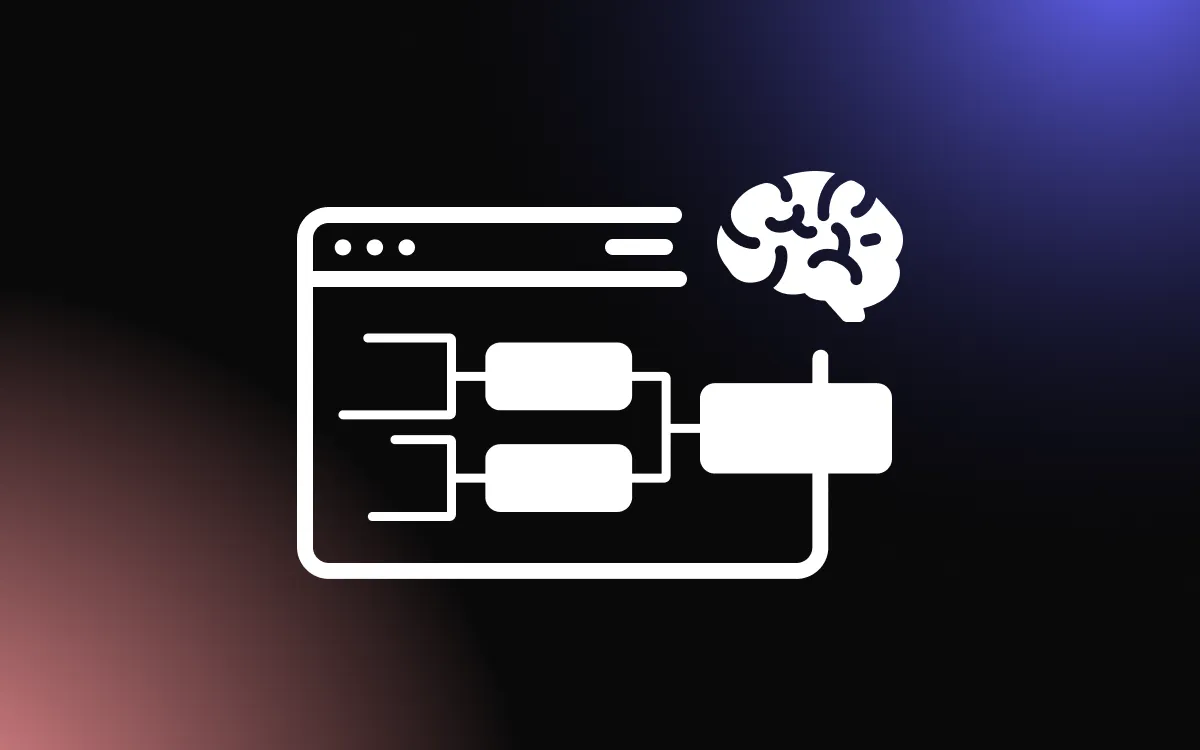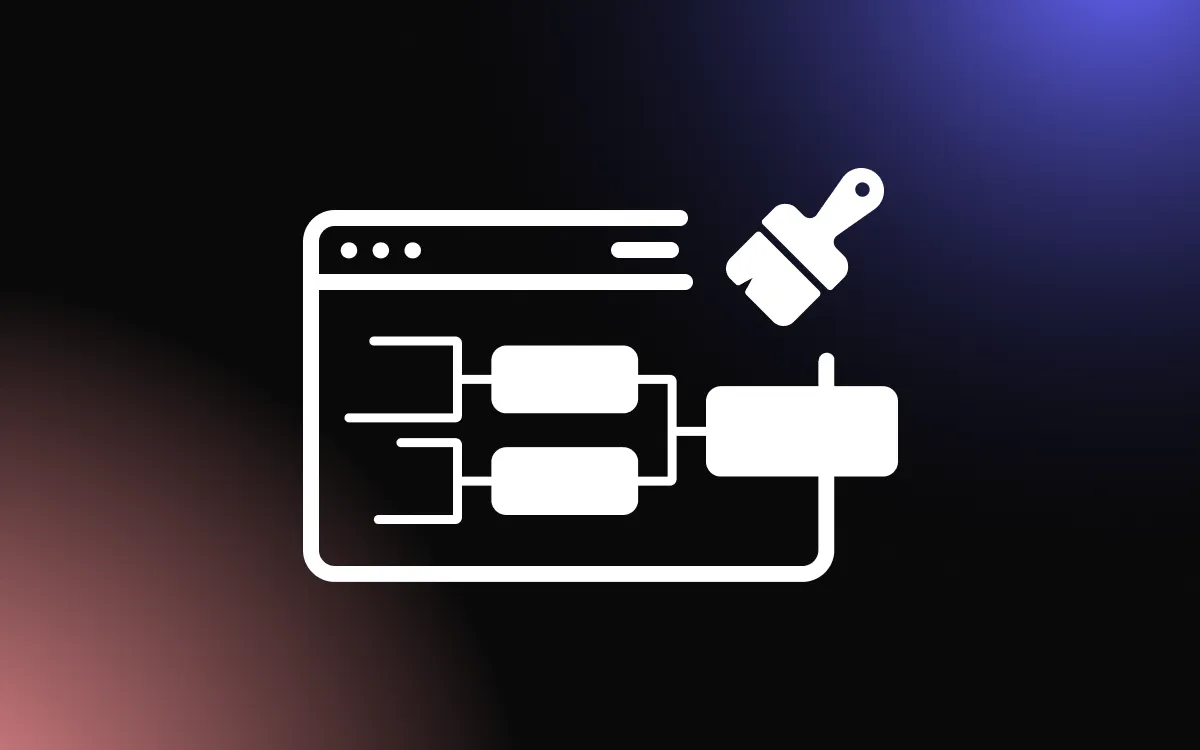
Interactive voting brackets have emerged as a dynamic tool for fan engagement across various platforms, from sports and entertainment to social media polls.
These brackets harness the excitement of competition and the power of choice, allowing fans to actively participate in determining outcomes. Whether it's voting for the best movie, favorite artist, or sports team, interactive voting brackets create a sense of involvement and community among fans.
This article explores how organizations and content creators can effectively use interactive voting brackets to engage their audience, enhance user experience, and foster a deeper connection with their fan base.
The Appeal of Interactive Voting Brackets
Why Voting Brackets Captivate Audiences
Interactive voting brackets have become a popular feature in various contexts, from sports and esports to entertainment and pop culture, captivating audiences for several reasons.
- Personal Investment: Voting allows fans to express their preferences and opinions, creating a personal investment in the outcome. This engagement makes the experience more meaningful and exciting.
- Community Participation: Voting brackets foster a sense of community among fans. Participants feel part of a larger group sharing a common interest, leading to lively discussions and debates.
- Competitive Excitement: The nature of brackets, with their elimination rounds and progression to a final winner, naturally builds suspense and competitive excitement, keeping audiences engaged throughout the process.
The Power of Interactive Engagement in Fan Communities
Interactive voting brackets play a significant role in enhancing engagement within fan communities.
- Social Interaction: They encourage social interaction, both online and offline. Fans discuss their choices on social media, forums, and in person, deepening their connection to the community.
- Increased Engagement: The interactive element of voting keeps fans actively involved over an extended period, as they follow the progress of their chosen candidates or teams through the rounds.
- Enhanced Fan Experience: Voting brackets often include additional content like player stats, historical data, or trivia, enriching the fan experience and providing deeper insights into the subject matter.
- Empowerment of Fans: These brackets empower fans by giving them a voice in the outcome, whether it's predicting the winner of a sports tournament or choosing the best movie of the year.
Designing Your Interactive Voting Bracket
Key Elements of an Engaging Bracket Design
Creating an interactive voting bracket that is both engaging and effective involves several key design elements:
- Clarity and Simplicity: The bracket layout should be clear and easy to understand, even for those unfamiliar with the format. Avoid clutter and ensure that the progression path from one round to the next is intuitive.
- Visual Appeal: Use attractive graphics and a coherent color scheme that aligns with the theme of the bracket. Visual appeal can significantly enhance user engagement.
- Interactive Elements: Incorporate interactive features such as hover effects, clickable areas, and animations to make the voting process more engaging.
- Real-Time Results: Displaying real-time voting results can increase excitement and encourage further participation. However, consider if revealing ongoing results aligns with your voting strategy.
- Mobile Responsiveness: Ensure that the bracket design is responsive and accessible on various devices, particularly smartphones, as many users will access the bracket on mobile.
Tips for Creating User-Friendly Voting Interfaces
A user-friendly interface is crucial for encouraging participation and ensuring a smooth voting experience:
- Easy Navigation: Design the interface so that users can easily navigate through different rounds and make their choices without confusion.
- Minimal Steps: Simplify the voting process to require as few steps as possible. Lengthy or complicated processes can deter participation.
- Clear Instructions: Provide clear instructions on how to vote, the criteria for selection, and any rules related to the voting process.
- Accessibility: Ensure that the voting interface is accessible to all users, including those with disabilities. This includes considerations for screen readers, keyboard navigation, and contrast ratios.
- Feedback and Confirmation: Offer immediate feedback when a vote is cast, such as a visual confirmation or a message, so users know their vote has been successfully recorded.
- Social Sharing Options: Include options for users to share their votes or bracket choices on social media. This not only enhances engagement but also promotes your bracket to a wider audience.
Maximizing Participation in Voting Brackets
Strategies to Encourage Fan Participation
To maximize participation in voting brackets, it's essential to implement strategies that actively engage and motivate the audience.
- Incentivization: Offer incentives for participation, such as prizes, recognition, or exclusive content. Rewards can significantly increase interest and engagement in the voting process.
- Engaging Content: Create compelling content around the bracket, like background stories, statistics, or fun facts about the choices or participants. This content can pique interest and encourage participation.
- Community Challenges: Organize community challenges or competitions, where groups of fans compete against each other in predicting outcomes. This fosters a sense of community and friendly competition.
- User-Friendly Experience: Ensure the voting process is straightforward and enjoyable. A hassle-free and enjoyable voting experience can greatly increase participation rates.
Leveraging Social Media to Drive Engagement
Social media is a powerful tool for promoting voting brackets and driving fan engagement.
- Regular Updates: Use social media platforms to provide regular updates about the bracket progress, upcoming matchups, and results. Keeping the audience informed encourages continuous engagement.
- Interactive Posts: Create interactive social media posts, such as polls, quizzes, or Q&A sessions, related to the bracket. These posts can increase visibility and encourage fans to participate in the voting process.
- Influencer Collaboration: Collaborate with influencers or popular figures in the relevant community to promote the bracket. Their endorsement can attract their followers to participate.
- Hashtag Campaigns: Develop unique hashtags for the voting bracket and encourage fans to use them in their posts. This not only tracks engagement but also helps in spreading the word.
- User-Generated Content: Encourage fans to create and share their own content related to the bracket, such as predictions, reactions, or support for their favorites. Sharing and featuring this user-generated content can create a buzz around the bracket.
- Cross-Platform Promotion: Promote the bracket across various social media platforms to reach a wider audience. Tailor the content and messaging to fit the specific audience of each platform.
Incorporating Real-Time Results and Feedback
Utilizing Live Updates to Enhance Excitement
Real-time updates are a dynamic way to keep audiences engaged and invested in voting brackets, adding an extra layer of excitement to the experience.
- Live Progress Tracking: Implement a system where votes are tallied and displayed in real-time. This allows participants to see immediate impacts of their votes, adding a sense of urgency and dynamism to the voting process.
- Dynamic Visuals: Use engaging visuals like animated graphs or progress bars to depict live results. These visuals can make the experience more engaging and easier to follow.
- Push Notifications: Send out push notifications or alerts for significant changes or milestones within the bracket. This keeps participants informed and encourages continuous engagement.
- Real-Time Commentary: Incorporate live commentary or updates through social media or the voting platform. This can include insights, fun facts, or highlights, adding depth to the live results.
Interactive Features for Instant Feedback
Interactive features not only make the voting process more engaging but also provide instant feedback to participants, enhancing their overall experience.
- Instant Poll Results: For supplementary polls or questions, show instant results post-voting. This immediate feedback can be gratifying and informative for participants.
- Reaction Options: Allow users to react to outcomes or progress within the bracket. Reactions like likes, emojis, or comments can foster a sense of community and discussion.
- Live Chat or Forums: Integrate a live chat feature or forums where participants can discuss in real-time. This can be a space for predictions, reactions, and sharing thoughts, enhancing the communal aspect.
- Interactive Dashboards: Provide participants with interactive dashboards where they can track their predictions, compare with others, and see their success rate in real-time.
- User Surveys and Feedback Forms: Post-voting, offer quick surveys or feedback forms. This not only gives participants a voice but also provides valuable insights for future improvements.
The Role of Content in Voting Brackets
Creating Compelling Content Around Brackets
Content plays a crucial role in enriching the voting bracket experience, drawing in participants and keeping them engaged throughout the process.
- Pre-Event Build-Up: Generate excitement with pre-event content that introduces the bracket, its participants, and potential matchups. This could include participant profiles, past performance analyses, or introductory videos.
- Educational Material: For audiences unfamiliar with certain participants or the context of the bracket, provide educational content. This could be background stories, explainer videos, or informational graphics.
- Regular Updates: Keep the audience engaged with regular content updates throughout the bracket's progression. This can include match summaries, notable performances, and unexpected outcomes.
- Interactive Media: Utilize interactive media like quizzes, infographics, and interactive stories that allow audiences to explore the bracket in a more engaging way.
Storytelling Through Bracket Matchups
Brackets provide a unique opportunity to tell compelling stories through their matchups, adding depth and interest to the voting process.
- Narrative Arcs: Develop narrative arcs around key matchups. This could involve rivalries, historical context, or the journey of underdogs. Such storytelling adds a layer of intrigue and emotional investment.
- Highlighting Key Moments: Identify and highlight key moments or turning points within the bracket. Use these moments to create engaging content like highlight reels, in-depth analyses, or feature articles.
- Personalizing Participants: Offer a more personal look at the participants through interviews, behind-the-scenes content, or human-interest stories. This personal connection can significantly boost audience interest and empathy.
- Fan Perspectives: Incorporate fan perspectives and reactions into the content. This could be through fan polls, social media highlights, or fan commentary, making the experience more relatable and communal.
- Cross-Platform Storytelling: Utilize different platforms (like social media, blogs, podcasts) to tell various aspects of the bracket's story, catering to different audience preferences and enhancing overall engagement.
Utilizing Voting Brackets for Various Themes
The Best Tool For Creating Voting Brackets

The best tool for creating voting brackets is the Bracket Maker by Common Ninja. This platform stands out for its ability to seamlessly integrate voting features into various types of brackets, making it ideal for tournaments, competitions, and interactive events. The user-friendly interface simplifies the process of setting up and managing brackets, allowing organizers to focus on engaging their audience.
With the Bracket Maker, users can easily create single-elimination, double-elimination, and custom brackets that are not only functional but also visually appealing. The voting feature enhances participant engagement, allowing audiences to actively participate in the progression of the tournament. This interactive element adds a layer of excitement and involvement, making each event more dynamic.
Additionally, the platform offers extensive customization options, including different layouts and skins, and the ability to add custom CSS, ensuring that each bracket aligns with the event's theme and branding. For anyone looking to create professional and engaging voting brackets, the Bracket Maker by Common Ninja is the top choice.
Adapting Brackets for Different Interests and Genres
Voting brackets are incredibly versatile and can be adapted to a wide range of themes, catering to diverse interests and genres. This adaptability allows for engaging audiences in various fields.
- Customization for Genre Specifics: Tailor the bracket structure and voting criteria to fit the specifics of each genre. For instance, a music-themed bracket might focus on best albums or songs, while a literary bracket might pit classic novels against each other.
- Incorporating Relevant Content: Include content that resonates with the specific theme, such as trivia for movie brackets or statistical analysis for sports brackets. This adds depth and context to the voting process.
- Interactive Elements: Introduce interactive elements suitable for the theme, like audio clips for music brackets or video highlights for sports brackets, to enhance the user experience.
Examples from Sports, Entertainment, and Beyond
Voting brackets have found success in a variety of fields, each bringing its unique flavor to the concept.
- Sports Tournaments: Perhaps the most traditional use of brackets, sports tournaments like March Madness in basketball, use brackets to determine champions through successive rounds of competition.
- Entertainment and Pop Culture: In entertainment, brackets are used for everything from determining the best movies or TV shows to favorite characters or celebrity matchups.
- Literature and Art: Literary brackets can pit genres, authors, or specific books against each other, while art brackets might focus on different art styles, periods, or individual artworks.
- Food and Cuisine: Culinary brackets can be fun, pitting dishes, restaurants, or even cuisines against each other to determine public favorites.
- Educational and Academic Themes: Brackets can also be educational, used in classrooms to debate historical events, scientific theories, or literary interpretations.
- Corporate and Team-Building Activities: In a corporate setting, brackets can be a tool for team-building activities, like voting on the best project ideas or office activities.
Overcoming Challenges in Interactive Voting
Ensuring Fairness and Transparency
Fairness and transparency are crucial in interactive voting systems to maintain trust and credibility among participants.
- Clear Voting Rules: Establish and communicate clear, concise rules for voting. This includes eligibility criteria, voting limits, and how winners are determined.
- Secure Voting Mechanisms: Implement secure and reliable voting mechanisms to prevent fraudulent activities like vote manipulation or bot voting. This might involve CAPTCHA verification, one-vote-per-user systems, or secure login requirements.
- Transparent Result Processing: Ensure the process of tallying votes and determining winners is transparent. Consider making the methodology public or having an independent body oversee the process.
- Audit Trails: Maintain audit trails for votes cast, which can be referenced in case of disputes or for verification purposes.
Addressing Technical Challenges
Technical challenges can significantly impact the user experience and the integrity of voting systems.
- Scalability and Load Management: Ensure the voting platform can handle high traffic volumes, especially during peak voting periods. This involves robust server support and efficient load management.
- User-Friendly Interface: Design an interface that is intuitive and easy to navigate for all users, regardless of their technical proficiency. This includes clear instructions, accessible design, and straightforward navigation paths.
- Cross-Platform Compatibility: The voting system should be compatible across various devices and browsers to ensure wide accessibility.
- Regular Testing and Updates: Conduct regular testing of the voting system to identify and fix bugs or vulnerabilities. Keep the system updated with the latest security patches and technological improvements.
- Technical Support and Contingency Plans: Provide reliable technical support for users facing issues. Have contingency plans in place for potential technical failures, such as backup systems or alternative voting methods.
- Data Backup and Recovery: Implement robust data backup and recovery procedures to protect against data loss or corruption.
Analyzing the Impact of Voting Brackets
Measuring Engagement and Participation
Understanding the level of engagement and participation in voting brackets is crucial for assessing their success and impact.
- Participation Metrics: Track key metrics such as the number of votes cast, unique voters, and repeat participation. High participation rates often indicate a strong interest and engagement in the bracket.
- Engagement Analysis: Analyze engagement levels by looking at the time spent on voting pages, interaction rates with related content (like comments or shares), and participation in related online discussions or social media activity.
- Demographic Insights: Gather demographic data of participants, if possible, to understand who your audience is. This can help tailor future brackets to better suit the interests of your audience.
- Feedback Collection: Conduct surveys or collect feedback directly from participants post-event. This can provide valuable insights into user experience and satisfaction.
Using Data to Improve Future Brackets
The data collected from voting brackets can be a goldmine for improving future iterations.
- Trend Analysis: Look for trends in voting patterns or popular choices. This can inform the selection of themes or matchups in future brackets.
- User Behavior Insights: Analyze user behavior data to understand how participants interact with the bracket. Are there drop-off points? Do certain rounds generate more excitement? This information can help in structuring future brackets more effectively.
- Content Engagement: Review which types of related content (videos, articles, infographics) garnered the most engagement. This can guide content strategy for future events.
- Technical Performance Review: Assess the technical performance of the voting platform. Identify any issues or bottlenecks and work on solutions to enhance user experience.
- A/B Testing: Consider A/B testing different formats or features in smaller-scale brackets to see what resonates best with your audience.
- Predictive Analytics: Use predictive analytics to forecast participation and engagement trends. This can help in better planning and resource allocation for future brackets.
Conclusion
Interactive voting brackets offer a unique and engaging way to involve fans in the narrative of a competition or event. As we've seen, these brackets are not just about determining winners; they're about creating a shared experience that fosters community and engagement. By allowing fans to vote and see real-time results, you provide a platform for interaction and discussion, deepening their investment in the content.
Whether used in sports, entertainment, or online communities, interactive voting brackets can significantly boost engagement and bring a new level of excitement to fan interactions. In the end, the success of these brackets lies in their ability to connect with fans on a personal level, making them feel like an integral part of the experience.



